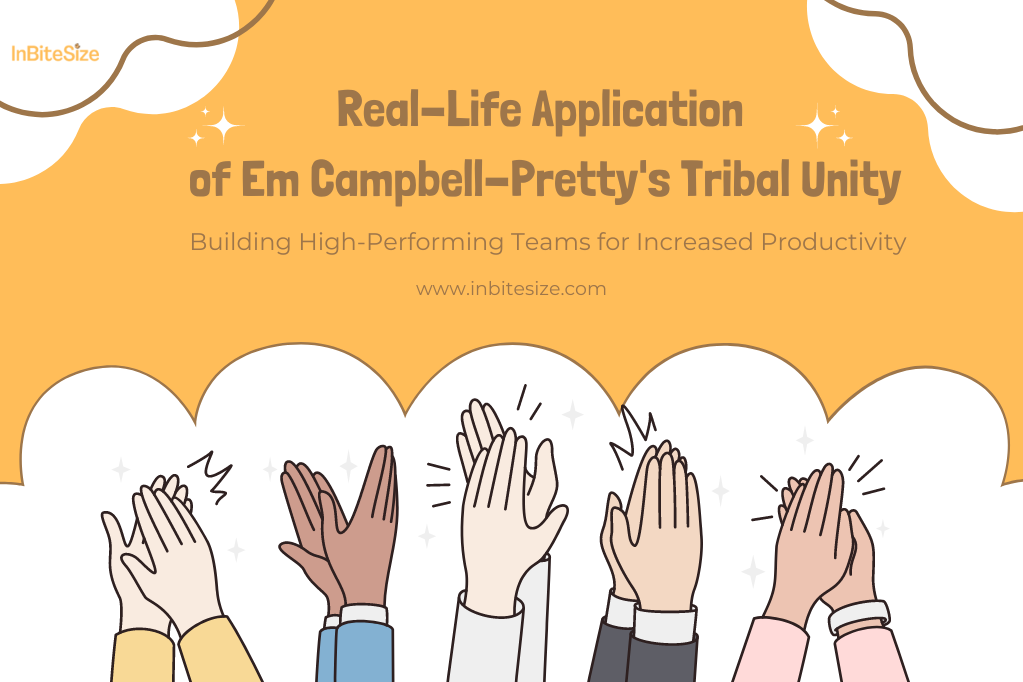Table of Contents
ToggleBuilding High-Performing Teams for Increased Productivity
Em Campbell-Pretty’s book “Tribal Unity” encourages readers to strive towards becoming high-performing agile teams to deliver value to customers consistently. Imagine an agile team where everyone feels and works together as one tribe: a family that rows in unison toward one direction, which leads to exceptional productivity. Sadly, only 2% of US organizations have achieved this level of delivery, as exemplified by the likes of Olympic gold medal teams and Apple Macintosh.
Campbell-Pretty outlines the essential elements required to build effective and motivated tribes. These include:
- Creating Great Teams: Encourage oneness, self-organization, and collaboration by communicating regularly.
- Building Strong Teams and Cultivating Your Tribe: Establish team identity, share common interests, invest in team-building activities, and foster cohesive relationships.
- Connecting with Leaders: Bring leaders close to the team and make them more relatable by allowing them to be vulnerable and show their humanity.
- Connecting to an Idea: Ensure everyone is aligned with the overall strategy, open to different perspectives, and willing to learn new ideas and gain insights.
- Sustaining Tribal Unity: Utilize data and metrics to maintain unity.
- Engaging Leaders: Create small wins to generate credibility and secure buy-in from leaders.
Application of Tribal Unity
I had the privilege of being part of an organization that had a remarkable level of Tribal Unity. Having worked for over two decades, I can confidently say that such teams or organizations are rare. This experience came during my involvement in a cloud acceleration initiative at an Oil and Gas company. Our goal was to migrate thousands of apps to the cloud, establish the necessary infrastructure and services, and enable teams to efficiently utilize the new CI/CD* pipeline within MS Azure.
Although the initiative has now concluded, the most valuable aspect was the learning experience. It was an opportunity to observe and learn about the key elements that make a team successful, such as clear direction, supportive management, and empowered teams. Although not without flaws, the teams and team members worked together towards common goals and targets. This resulted in exceptional outcomes in every iteration: such as migrating 120 apps instead of the planned 100 in a single quarter.
What made this initiative effective?
On one hand, the success of this initiative was due to the sense of unity among team members. It felt like a big family, fostering strong trust among team members. We all trusted each other and worked together to achieve our common goals. Team members pitched in wherever help was needed, regardless of their job descriptions. I have witnessed developers helping with testing, QA specialists giving sprint demos, and scrum masters providing team training. On the other hand, our team does not lie in wait for the person with the highest position to make decisions. Our team members were empowered and held accountable for their actions—this collaborative mindset was the key to our success.
How did we transform?
The transformation did not happen overnight. It had a rough start with a series of revolving doors and a storm of conflicting ideas, as new teams and initiatives do. The initiative began with three agile teams. The program had a few attritions in the first few iterations, early failures, and other obstacles. Notwithstanding, the teams leveraged the overall strategy in order to manage the work effectively: prioritized the work, implemented in smaller batch sizes, and only worked on the highest valued items.
To promote oneness and a sense of belonging, the teams decided to adopt common-themed names based on the nature of their work. The system teams, who were responsible for enabling the services (i.e., data, compute, VM, billing, etc.), designing the architecture guidance, and setting up the CI/CD* pipeline adopted rocket ship names. While the teams that were responsible for migrating apps from the on-prem solution to the cloud, they were named after birds due to their migration patterns.
Measuring success
Success was measured when we demonstrated working solutions. In every iteration, teams would demonstrate the migrated apps and primary functionality to show how the application operated in the cloud. In addition, setting clear metrics criteria, such as what qualifies as a successful application migration, is important to confirm progress towards the overall goal. Saying we have migrated ten apps means meeting the expected behavior, quality, and performance standards. This then shows that we have the capability to achieve our goals and measure our progress with impressive precision.
Incorporating a Bit of Fun
The team members, recognizing the importance of building a stronger and closer team, came up with various initiatives! These initiatives included Thursday Happy Hour sessions, where the team members would gather after work to interact and build lasting relationships outside of work. A Lean Coffee Friday session was another opportunity that provided a safe space to discuss any, not only work-related, topics and share their views and opinions. A Hackathon was also initiated, where team members worked on a project and developed innovative solutions to a given problem. Ultimately, the intention of these fun activities were formed with the team members in mind and how they could benefit from a positive work environment. Thus, being part of a team that fostered a culture of collaboration and teamwork resulted in increased productivity and efficiency.
Call to Action
How has your organization established Tribal Unity? If you have not done so, what key elements can you incorporate into your organization? By learning about Tribal Unity, you can learn how to create oneness, build strong relationships, and connect with leaders. So, get ready to dive into the fascinating world of tribal culture and learn the key elements that will help you achieve this vision!
Curious for more, check out our book review on Tribal Unity.
* CI/CD – Continuous Integration/Continuous Deployment
